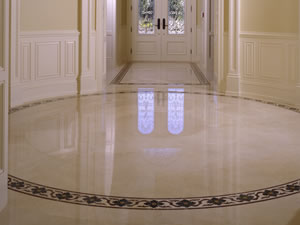
Repairing Limestone Etching and Scratching
Limestone is one of the most prevalent natural stones in the United States and is gaining popularity in design since it requires little maintenance, offers excellent wear-ability and is quite versatile. It is a popular and excellent choice for floors, shower walls, mantels, outdoor tabletops and kitchen countertops. It is quarried in nine states, with Wisconsin and Indiana producing the most.
While hardy, beautiful and elegant limestone is a calcite based stone, making it vulnerable to etching, just like marble. (Remember, marble is a limestone; however limestone is not a marble). Limestone is also a soft stone making it susceptible to scratches.
Etching
Etching is the most common natural stone problem, especially with limestone. Any acidic substance—tomatoes, wine, soda, vinegar—that touches your limestone will most likely leave a white-ish, dull mark that resembles a water-glass ring on a table. If the etch is really bad, you can actually feel it with your fingers.
The Solution: For light etching on polished limestone you can remove the etching yourself with a mild etch remover paste. For more severe etching or etching on honed (non-reflective) surfaces, it is recommended that you call a stone restoration professional.
Scratches
Scratches will occur in limestone because it is such a soft stone. Knives —anything sharp for that matter—and abrasive cleaners can easily scratch your precious limestone.
The Solution: For light scratches in darker limestone, blot mineral oil into the scratch. If your stone is lightly colored, honed or polished, use super fine sandpaper, working your way up to finer and finer grits until the scratch disappears. Deeper and larger scratches should be buffed out by a professional.
This is one of a series of articles written and published on behalf of Stone and Tile PRO Partners.
